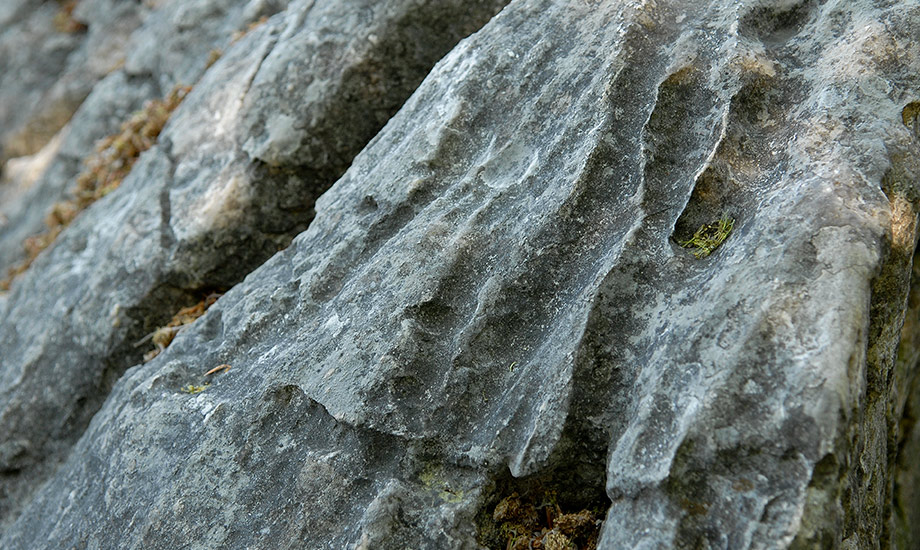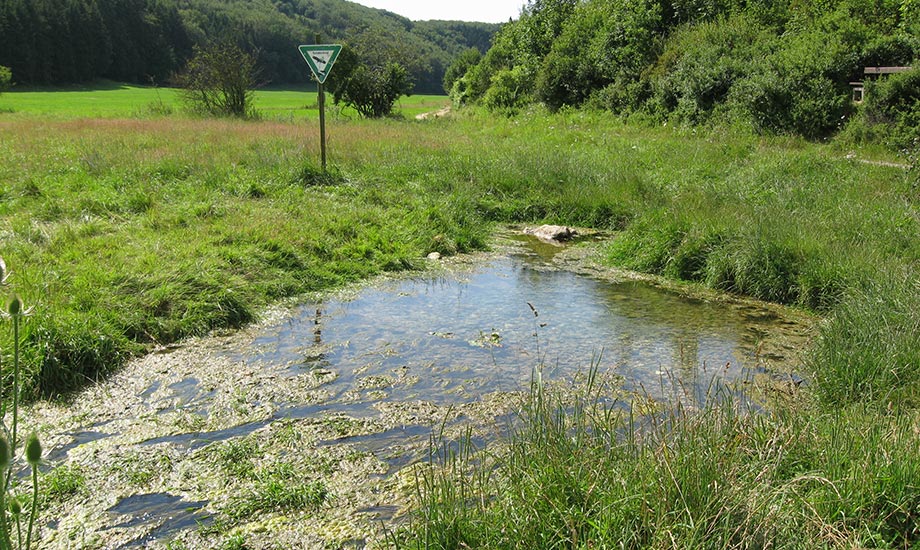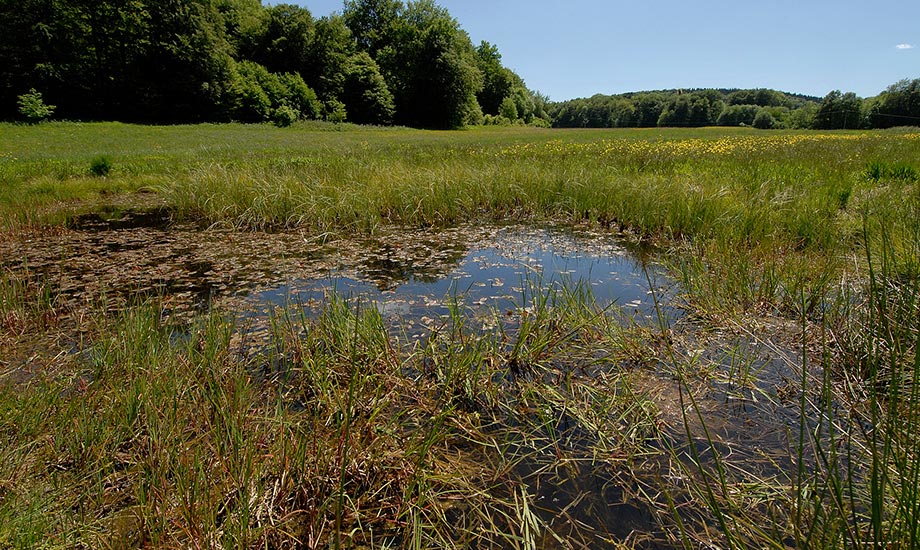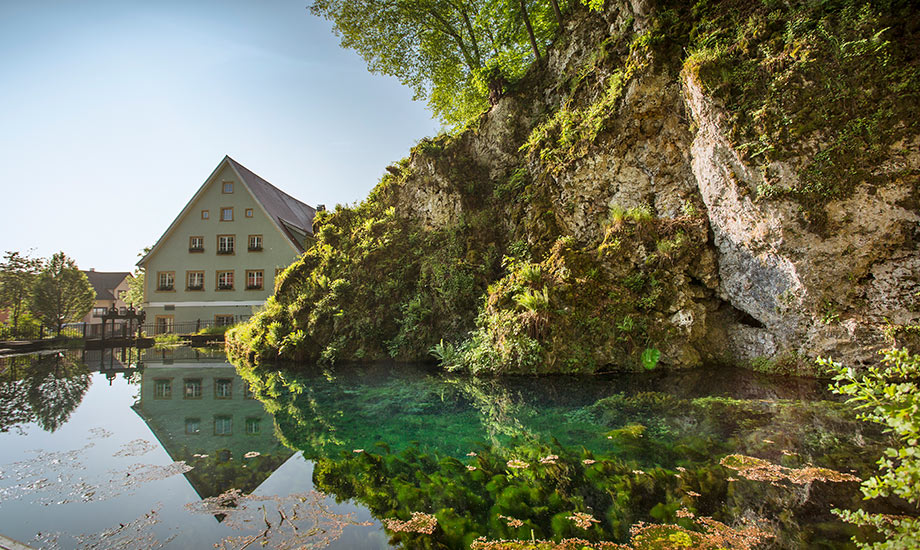Karst phenomena
The karst landscape of the Swabian Alb is characterized by different phenomena.
The largest and most striking are the numerous dry valleys that crisscross the Alb plateau. These valleys were originally created by a surface river system. Due to the continuous uplift of the Alb and the associated formation of underground drainage ways, they are now permanently above the karst water level and fell dry. During the ice ages, these surface waters were partially reactivated, as the water could no longer seep into the frozen ground.
The hunger wells are a special feature. They are located in the fluctuation area of the karst water level, and are reactivated only during longer periods of precipitation. Then water flows again and the dry valley temporarily becomes a river valley. The fascinating phenomenon of the Danube seepage shows the reverse process: parts of the riverbed temporarily dry up in the summer months with little precipitation, and the water of the Danube continues to flow only in the underground karst system.
The spring ponds on the southeastern edge of the Swabian Alb carry water all year round. They lie slightly below the karst water level. There, precipitation water transported in underground cave systems partially resurfaces under high pressure. If water is of the spring ponds is not too turbid due to whirled-up sediment, it shines in bright blue tones. Fine particles of lime in the clear water enhance the blue colour effect by scattering, which is caused by the absorption of the red and yellow components of white light. A visit to a spring pond is therefore especially worthwhile after a few days without heavy precipitation.
Dolines are funnel- or bowl-shaped depressions. They are formed by the collapse of the ceiling of underground karst cavities or by the slow dissolution of rock under the ground cover. Rows of sinkholes may trace the course of underground cave systems on the surface. In the past, sinkholes were often misused for the disposal of animal carcasses and waste, but today they are known to be directly connected to the cave system and thus to the karst water. Any pollution is thus introduced unfiltered into the sensitive system.
A rather small and therefore more inconspicuous form of karst in the Swabian Alb are so-called karren. They are formed by the drain of water and dissolution of rock at the surface. They can be cup-shaped or channel-shaped. They often follow existing fissures and cracks on horizontal surfaces.
More striking are the "perforated stones", whose holes make the rock look like Swiss cheese. They are often used as decorative stones in gardens. They are formed by transformation processes between dolomite and limestone in combination with intensive lime solution.



